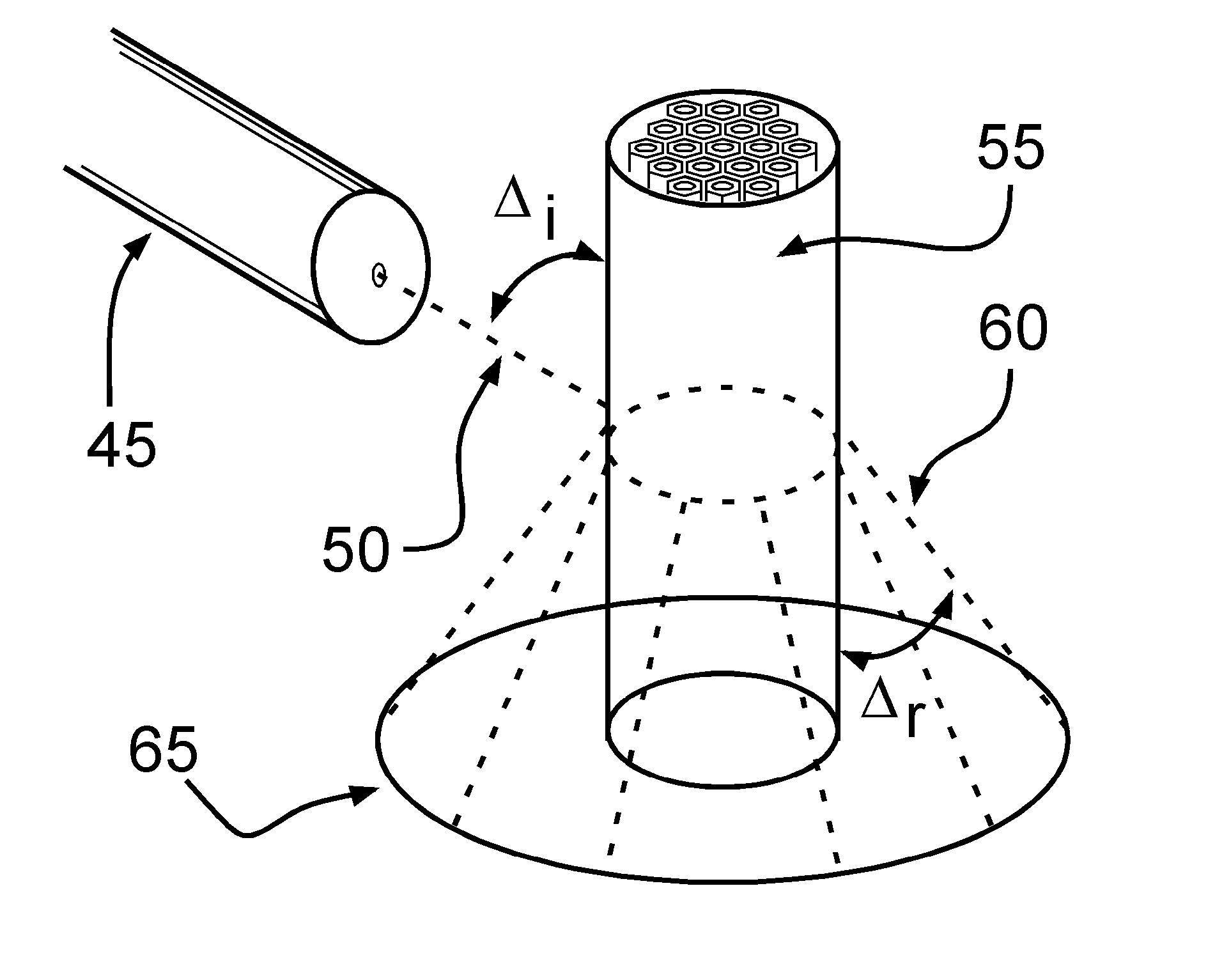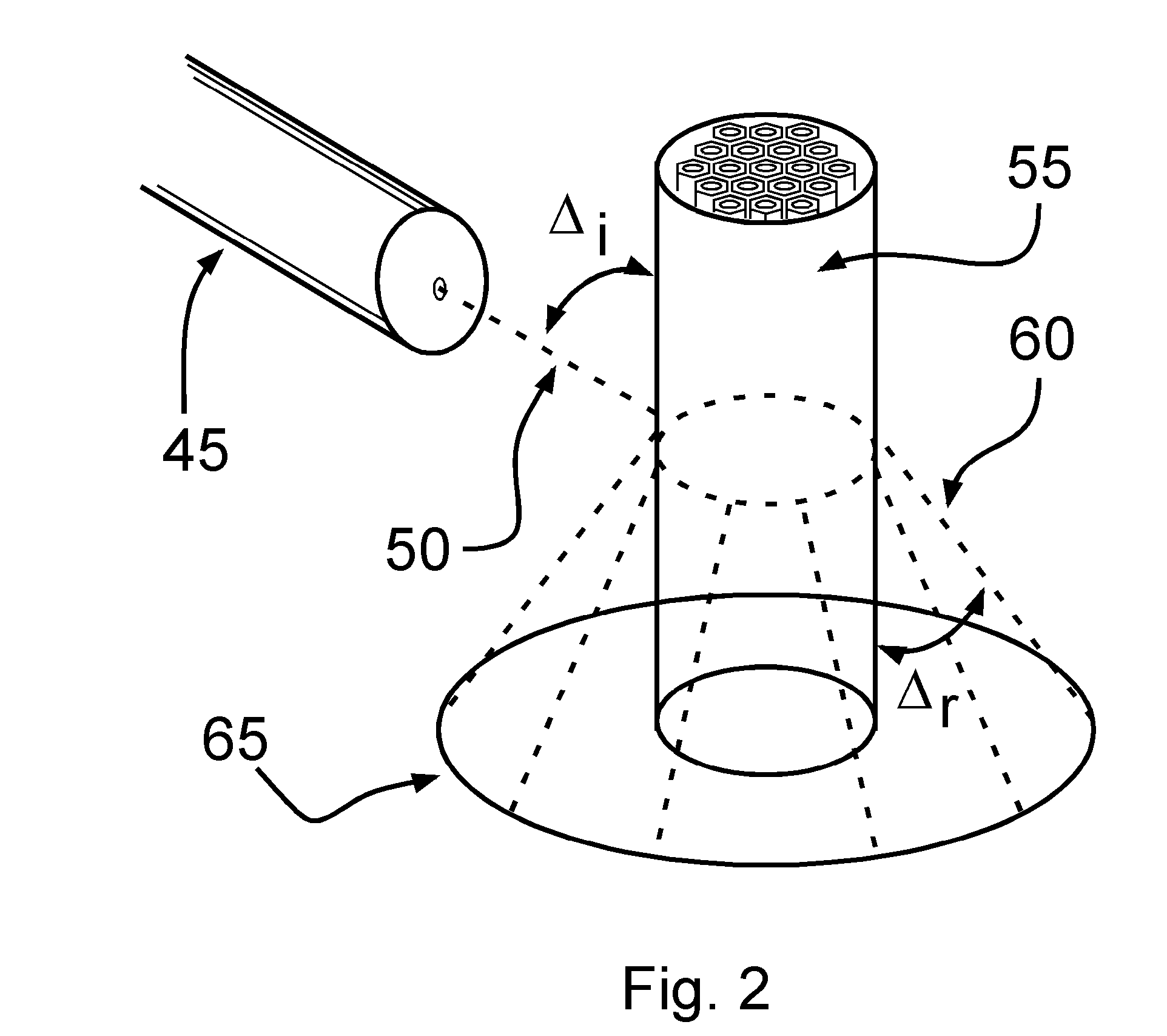Cones and Cylinders of Laser Light
a laser light and cone technology, applied in waveguides, instruments, fibre light guides, etc., can solve the problems of objectionable changes in the light plane and thus the cylinder of light, system demands relatively stringent alignment and complexity, etc., to achieve economic manufacturing, the effect of alleviating complex manufacturing and operational requirements
- Summary
- Abstract
- Description
- Claims
- Application Information
AI Technical Summary
Benefits of technology
Problems solved by technology
Method used
Image
Examples
Embodiment Construction
[0014] This Detailed Description describes an exemplary embodiment of the conical shell of radiation projection system used to convert a laser beam into a projected conical shell of laser light. The term “conical shell” is used to refer to a conical shell of any form of collimated electromagnetic radiation (i.e., a “shell of radiation”), including visible laser light, but also including non-visible electromagnetic radiation (such as UV, infrared, millimeter wave, and microwave).
[0015] The exemplary laser conical shell projection system involves directing a laser beam non-orthogonal to a fiber-optic bundle, i.e., a fused bundle of individual fiber optic filaments. The incident laser light is projected conically outward from the fiber optic bundle forming a laser light conical shell. The longitudinal axis of the fiber optic bundle is the axis of the resulting conical laser light shell.
[0016]FIG. 2 illustrates the laser conical shell projection technique, projecting a laser conical s...
PUM
 Login to View More
Login to View More Abstract
Description
Claims
Application Information
 Login to View More
Login to View More - R&D
- Intellectual Property
- Life Sciences
- Materials
- Tech Scout
- Unparalleled Data Quality
- Higher Quality Content
- 60% Fewer Hallucinations
Browse by: Latest US Patents, China's latest patents, Technical Efficacy Thesaurus, Application Domain, Technology Topic, Popular Technical Reports.
© 2025 PatSnap. All rights reserved.Legal|Privacy policy|Modern Slavery Act Transparency Statement|Sitemap|About US| Contact US: help@patsnap.com



